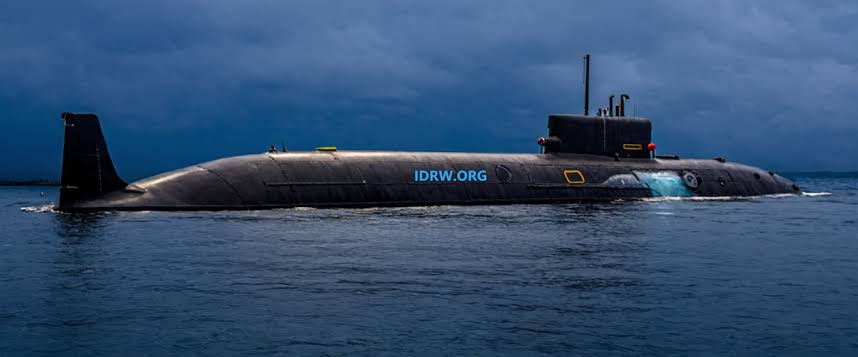SOURCE: AFI

The Indian Navy is on the cusp of a significant milestone in its quest for a robust nuclear triad, with the impending induction of INS Aridhaman, the third nuclear-powered ballistic missile submarine (SSBN) of the Arihant-class, later this year. As an upgraded variant of its predecessors, INS Arihant and INS Arighaat, INS Aridhaman promises to enhance India’s sea-based nuclear deterrence, a critical component of its strategic defense posture. With its advanced features, increased missile capacity, and higher indigenous content, INS Aridhaman is poised to play a pivotal role in safeguarding India’s national security interests in an increasingly volatile Indo-Pacific region.
The Arihant-class submarines, developed under the Indian Navy’s secretive Advanced Technology Vessel (ATV) project, represent India’s first indigenous foray into nuclear-powered ballistic missile submarines. The lead vessel, INS Arihant, was commissioned in August 2016, marking a historic achievement as the first SSBN built by a nation outside the five permanent members of the United Nations Security Council. The second submarine, INS Arighaat, was commissioned on August 29, 2024, after extensive sea trials, further solidifying India’s sea-based nuclear deterrence.
INS Aridhaman, codenamed S4, is the third in this series and is set to be inducted into the Indian Navy by the end of 2025. Launched in November 2021, the submarine has undergone rigorous sea trials over the past few years, testing its propulsion, weapons systems, and stealth capabilities. The Arihant-class submarines are designed to provide India with a credible second-strike capability, ensuring the ability to retaliate in the event of a nuclear first strike—a cornerstone of India’s no-first-use nuclear policy.
INS Aridhaman is an upgraded variant of the Arihant-class, featuring several improvements over INS Arihant and INS Arighaat. One of the most significant enhancements is its increased displacement, estimated at over 7,000 tonnes—approximately 1,000 tonnes more than its predecessors. This increase is due to a 10-meter extension of the hull, which allows for a larger missile bay and greater operational endurance.
Unlike INS Arihant and INS Arighaat, which are equipped with four vertical launch tubes capable of carrying either 12 K-15 Sagarika missiles (750 km range) or four K-4 missiles (3,500 km range), INS Aridhaman boasts eight launch tubes. This upgrade enables it to carry up to 24 K-15 missiles or eight K-4 missiles, significantly enhancing its firepower and flexibility. The K-4 missile, with its 3,500 km range, provides India with the ability to strike targets deep within enemy territory while remaining submerged in Indian waters, a critical factor in maintaining strategic deterrence against potential adversaries like China and Pakistan.
The submarine is powered by an upgraded 83 MW pressurized water reactor (PWR), developed by the Bhabha Atomic Research Centre (BARC). This reactor offers improved efficiency and a lower acoustic signature compared to the one in INS Arihant, making INS Aridhaman harder to detect by enemy anti-submarine warfare assets. The submarine can achieve speeds of 12–15 knots on the surface and up to 24 knots when submerged, with virtually unlimited endurance constrained only by crew fatigue and food supplies.
Another notable upgrade is the increased indigenous content, reported to be around 70% in INS Aridhaman, compared to earlier vessels in the class. This reflects India’s growing self-reliance in defense manufacturing, with companies like Larsen & Toubro (L&T), Tata Power, and Walchandnagar Industries contributing to the submarine’s construction and systems integration. The higher indigenous content not only reduces dependency on foreign technology but also strengthens India’s defense industrial base, aligning with the government’s “Atma Nirbhar Bharat” initiative.
NOTE: AFI is a proud outsourced content creator partner of IDRW.ORG. All content created by AFI is the sole property of AFI and is protected by copyright. AFI takes copyright infringement seriously and will pursue all legal options available to protect its content.